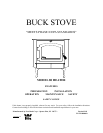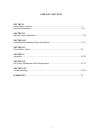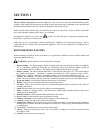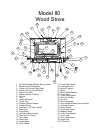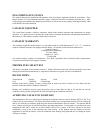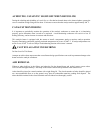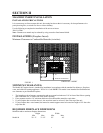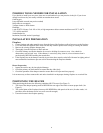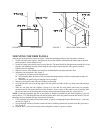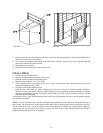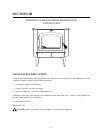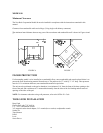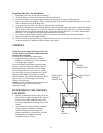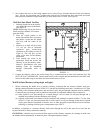
EPA COMPLIANCE STATUS
This manual describes the installation and operation of the New Buck Corporation, Model 80 wood heater. These
heaters meet the U.S. Environmental Protection Agency’s Emission limits for wood heaters sold after July 1, 1992.
Under specific test conditions this heater has been shown to deliver heat at rates ranging from approximately 9,000
to 40,300 BTU/hr for the Model 80.
CATALYST EQUIPPED
This wood heater contains a catalytic combustor, which needs periodic inspection and replacement for proper
operation. It is against the law to operate this wood heater in a manner inconsistent with operating instructions in
this manual or if the catalytic element is deactivated or removed.
CATALYST WARRANTY
The combustor supplied with this heater is a 3 cell catalyst with an overall dimension of 2" x 6" x 7". Consult the
catalytic combustor warranty also supplied with this heater. All warranty claims should be addressed to:
Applied Ceramics
Customer Service Department
P.O. Box 29664
Atlanta, GA 30359
770-448-6888
See enclosed catalyst warranty for instructions. New Buck Corporation does not handle catalyst replacements.
Customer can order direct form Applied Ceramics.
PROPER FUEL SELECTION
This heater is designed to burn natural wood only. Higher efficiencies and lower emissions generally result when
burning air dried seasoned hardwoods, as compared to softwoods or to green or freshly cut hardwoods.
DO NOT BURN:
Treated Wood Garbage Solvents Trash
Coal Cardboard Colored Paper
Burning treated wood, garbage, solvents, colored paper or trash may result in release of toxic fumes and may
poison or render the catalytic combustor ineffective.
Burning coal, cardboard, or loose paper can produce soot, or large flakes of char or fly ash that can coat the
combustor, causing smoke spillage into the room and rendering the combustor ineffective.
ACHIEVING CATALYTIC LIGHT-OFF
The temperature in the stove and the gases entering the combustor must be raised to between 500
o
F to 700
o
F for
catalytic activity to be initiated. This can be determined with the use of a temperature monitor (TM-20). During the
start up of a cold stove a medium to high firing rate must be maintained for about 20 minutes. This ensures that the
stove, catalyst, and fuel are all stabilized at proper operating temperatures. Even though it is possible to have gas
temperatures reach 600
o
F within two to three minutes after a fire is started, if the fire is allowed to die down
immediately it may go out or the combustor may stop working. If this happens open the damper to raise the
temperature to activate the catalyst. Once the combustor starts working, heat generated in it by burning the smoke
will keep it working.
5



